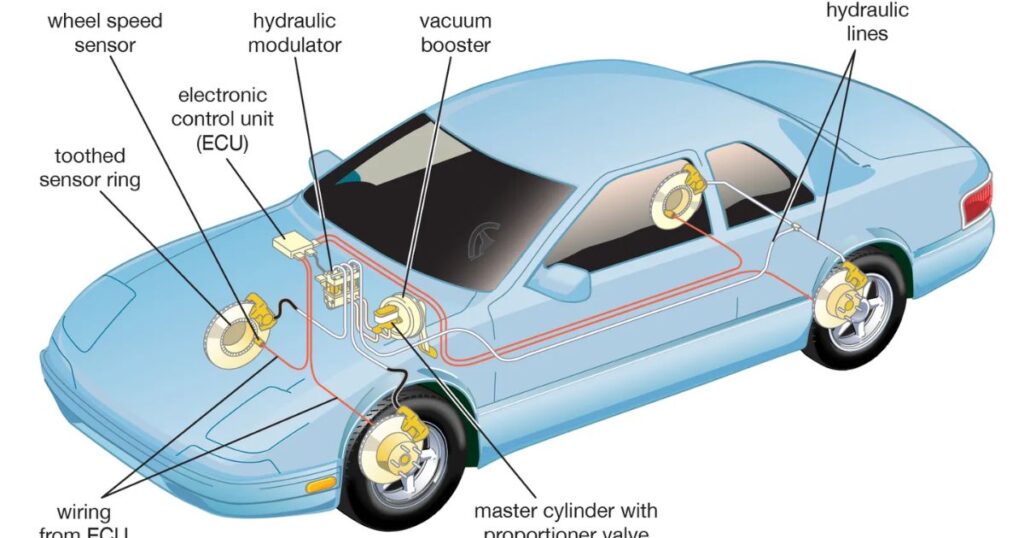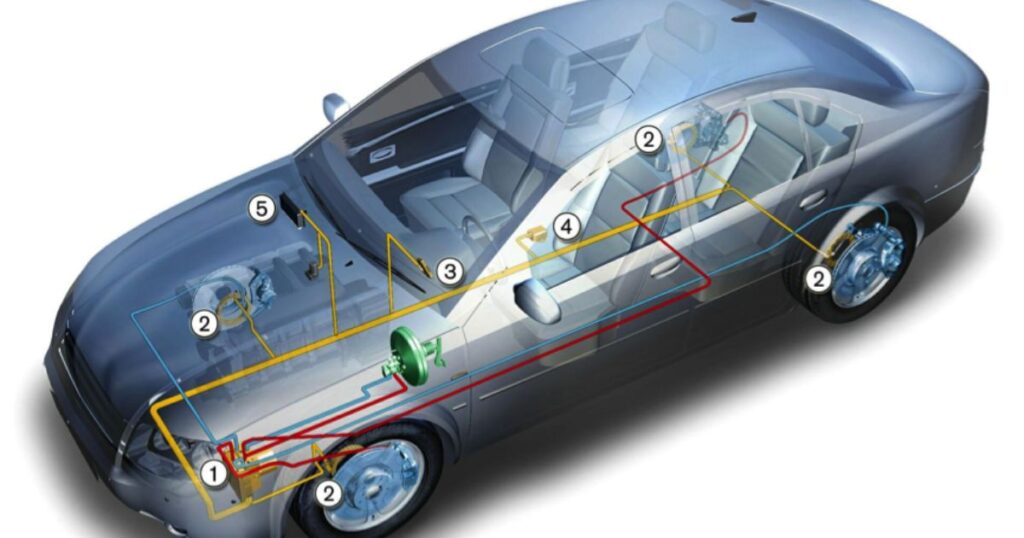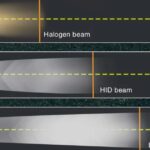Imagine driving on a rain-soaked highway when a vehicle brakes suddenly in front of you. You slam the brakes, but your car keeps skidding, and you lose control. This heart-stopping scenario is ideal for many drivers without anti-lock braking systems (ABS).
Fortunately, ABS has become a standard safety feature that can prevent such terrifying situations. This comprehensive guide will explore the inner workings of ABS systems, their advantages types, and why they are an essential automotive innovation that saves countless lives.
Certified Used Cars on Spinny
| Make/Model | Year | Mileage | Fuel Type | Transmission | Drivetrain | Features | Price |
| Tata Harrier | 2019 | 29.7K km | Diesel | 6-Speed Manual | 4X4 | XZ Variant, Sunroof, Navigation, Alloy Wheels, Android Auto | Rs. 12.73 Lakh |
| Hyundai Verna | 2013 | 51.0K km | Petrol | 5-Speed Manual | FWD | 1.6 VTVT Engine, Power Windows, Central Locking, AC, CD Player | Rs. 4.49 Lakh |
| Hyundai i20 | 2021 | 31.5K km | Diesel | 6-Speed Manual | FWD | 1.5 VGT Engine, Cruise Control, Android Auto, Rear Parking Sensor, push button start | Rs. 9.59 Lakh |
| Maruti Suzuki Ciaz | 2018 | 46.2K km | Petrol | 5-Speed Manual | FWD | Alpha Variant, Power Windows, Automatic Climate Control, Leather Seats, Navigation | Rs. 7.59 Lakh |
| Honda City | 2020 | 19.8K km | Petrol | CVT Automatic | FWD | Z Xi Variant, Sunroof, Lane Watch Camera, LED Headlamps, Android Auto | Rs. 11.25 Lakh |
| Mahindra XUV300 | 2019 | 35.4K km | Diesel | 6-Speed Manual | 4X4 | W8 Variant, 7-Seater, Navigation, Android Auto, Rear Camera | Rs. 8.99 Lakh |
What is an Anti-Lock Braking System?

An anti-lock braking system (ABS) is a safety technology that prevents the wheels from locking up during hard braking situations. When wheels lock, the vehicle loses traction and the ability to steer, increasing the risk of an uncontrolled skid or collision.
ABS continuously monitors wheel speed and automatically adjusts brake pressure to keep the wheels rotating, allowing the driver to maintain steering control and maneuverability even during heavy braking.
Why is ABS crucial?
Without ABS, slamming the brakes on a wet or low-traction surface can cause the wheels to lock and the tires to slide uncontrollably. This complete loss of traction and steering ability significantly increases stopping distances and the likelihood of a dangerous skid or spin-out accident.
Imagine a vehicle is a sled being pulled across the ice. If the sled’s runners dig in and lock up, it will slide straight, unable to steer or slow down effectively. ABS prevents this deadly lockup scenario by keeping the tires rolling to maintain control.
What is the need for ABS?
Traditional brake systems rely solely on the driver’s pressure modulation and skill to prevent wheel lockup during hard stops. However, most drivers cannot accurately control the emergency braking force, causing wheels to lock.
ABS systems eliminate this risk by automatically adjusting brake pressure up to 20 times per second through a sophisticated control unit and an array of components. This ensures the wheels rotate just enough to maintain traction and steerability on any surface.
What are the main components of ABS?
An anti-lock braking system consists of four main components:
- Speed sensors: Detect the rotational speed of each wheel
- Valves: Regulate brake pressure to each wheel
- Pump: Restores brake line pressure for continued brake application
- Electronic Control Unit (ECU): Computer that monitors sensors and controls valves/pump
How does ABS work?
When you apply the brakes hard, the ABS goes through this cycle:
- Sensors detect if any wheel is decelerating faster than the others, indicating impending lockup.
- The ECU signals valves to reduce brake line pressure to those wheel(s).
- The wheel(s) regain traction with reduced brake force and rotate correctly.
- Pressure is reapplied, and the process repeats up to 20 times per second.
This rapid pressure modulation prevents the wheels from locking while allowing maximum braking force without skidding. You stay in control to steer around obstacles or bring the vehicle safely to a stop.
Example ABS Scenario
When a dog enters the street ahead, you’re driving on a wet road. You slam the brakes and:
- Without ABS, The wheels lock up, causing a complete loss of traction and steering. Your car skids straight towards the dog with no control.
- With ABS: The anti-lock system rapidly adjusts brake pressure, allowing the wheels to keep rolling. You remain in control to steer around the dog and stop safely.
Advantages of Anti-Lock Braking Systems
- Shorter stopping distances: ABS prevents wheel lockup for maximum traction and braking force without skidding.
- Maintained steering control: Rotating wheels allow you to steer around hazards during hard braking.
- Reduced skidding and flat-spotting: No lockups means less uneven tire wear.
- Synergy with traction control: ABS shares components with the traction control system for optimized braking/acceleration.
Disadvantages of Anti-Lock Braking Systems
- Less effective on low-traction surfaces: ABS can’t compensate for shallow grip like ice.
- Increased maintenance complexity/cost: The ABS computer, sensors, and hydraulics add complexity.
- Slightly longer dry stops in some cases: Due to the system’s pressure pulsing to prevent lockup.
Classification of Anti-Lock Braking Systems
ABS systems are classified based on the number of speed sensors and hydraulic valve channels:
- Four-channel, four-sensor ABS: Each wheel has a speed sensor and valve to control braking individually.
- Three-channel, four-sensor ABS: Each front wheel has its valve and sensor, but the two rear wheels share a valve and sensor.
- Three channels, three sensors ABS: One valve/sensor for each front wheel and one shared valve/sensor for both rear wheels.
The four-channel design provides the most precise, independent brake control but is more complex and costly.
ARE ANTI-LOCK BRAKES DIFFERENT FROM CONVENTIONAL BRAKES?

Yes, ABS brakes work fundamentally differently than traditional brake systems. Conventional brakes rely solely on the driver to modulate pedal pressure and prevent lockup.
In contrast, an anti-lock brake system uses an automated computer-controlled hydraulic system to rapidly pulse the brakes and maintain wheel rotation – a process impossible for human drivers.
For example, on a conventional system, stomping the pedal on ice would lock the wheels and send you sliding. But ABS keeps adjusting brake force to allow maximum traction and steering control in those slick conditions.
Read More Posts
FAQs
Is it OK to drive with the ABS light on?
It’s generally not recommended to drive with the ABS light on, as it indicates a problem with the anti-lock braking system. While the regular brakes will still work, you won’t have the added safety benefits of ABS. Get the system checked by a mechanic as soon as possible.
What is ABS, and how does it work?
ABS (Anti-lock Braking System) is a safety technology that prevents the wheels from locking up during hard braking situations. It uses sensors to detect impending wheel lockup and rapidly modulates the brake pressure to allow the wheels to keep rotating, maintaining traction and steering control. This is achieved through an electronic control unit, valves, and a pump that regulates brake fluid pressure.
What does ABS do for a car?
The main benefits of ABS include:
- Shorter stopping distances on most surfaces by preventing wheel lockup and skidding
- Ability to steer around obstacles during hard braking
- Reduced risk of uncontrolled skids or spin-outs
- Less wear on tires from avoiding flat-spotting caused by locked wheels
How do I know if my car has ABS?
Most modern vehicles have ABS as standard equipment. You’ll typically see an “ABS” light on the dashboard that illuminates briefly when you start the car as a bulb check. If your car has standard disc brakes on most wheels instead of drum brakes, it likely has ABS. You can also check the owner’s manual specifications.
Conclusion
An anti-lock braking system is one of the most important automotive safety innovations of modern times. By preventing deadly wheel lockups, ABS allows drivers to steer and brake effectively in emergencies that would otherwise likely result in loss of control.
While ABS is no substitute for attentive driving, its advantages in reducing stopping distances, preventing skids, and maintaining steering ability have saved countless lives. If your vehicle doesn’t have this essential safety feature, consider upgrading to get ABS’s stopping power and crash prevention.







